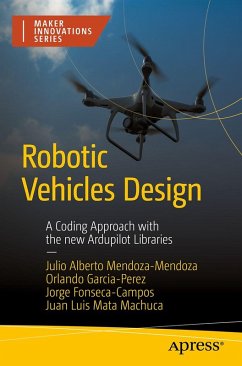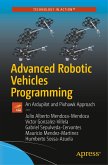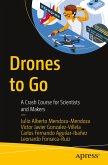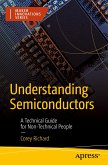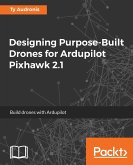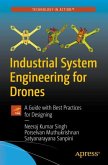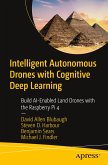This book is your gateway to mastering advanced robotic programming. Covering everything from hardware to software, Robotic Vehicles Design seamlessly connects theory with real-world applications in the development of unmanned vehicles.
The book introduces the latest Ardupilot libraries, complete with detailed, hands-on examples. These include cutting-edge mechatronic projects: a single-motor aeropendulum, dual-motor aeropendulum, a quadcopter embedded in a spherical joint, and a free-quadcopter controlled in both height and orientation. You'll find four fully guided mechatronic examples, thoroughly covering mechanical, electronic, and control designs, along with complete code. These examples provide a step-by-step guide for users to build their own prototypes and replicate the book's core programs.
Designed for a wide audience, from high school students to postgraduates, this book is written in an accessible yet comprehensive style. It breaks down complex concepts, walking readers through everything from the simplest details to final implementation. Whether you're just starting out or looking to sharpen your skills, this book is the perfect resource to elevate your robotic programming expertise.
What You'll Learn
How to use the new Ardupilot libraries
How to employ them in mobile robots
How to design mechatronics and aerospace projects from scratch
Who This Book Is For
The book is intended for people interested in programming mobile robots (aerial, underwater or ground vehicles), and the target audience goes from high school students, hobbyists, undergraduate students, postgraduate ones and even researchers. People with basic skills and experience ranging from high schools to professional researchers.
Secondary audiences are mechatronics students and aerospace ones.
The book introduces the latest Ardupilot libraries, complete with detailed, hands-on examples. These include cutting-edge mechatronic projects: a single-motor aeropendulum, dual-motor aeropendulum, a quadcopter embedded in a spherical joint, and a free-quadcopter controlled in both height and orientation. You'll find four fully guided mechatronic examples, thoroughly covering mechanical, electronic, and control designs, along with complete code. These examples provide a step-by-step guide for users to build their own prototypes and replicate the book's core programs.
Designed for a wide audience, from high school students to postgraduates, this book is written in an accessible yet comprehensive style. It breaks down complex concepts, walking readers through everything from the simplest details to final implementation. Whether you're just starting out or looking to sharpen your skills, this book is the perfect resource to elevate your robotic programming expertise.
What You'll Learn
How to use the new Ardupilot libraries
How to employ them in mobile robots
How to design mechatronics and aerospace projects from scratch
Who This Book Is For
The book is intended for people interested in programming mobile robots (aerial, underwater or ground vehicles), and the target audience goes from high school students, hobbyists, undergraduate students, postgraduate ones and even researchers. People with basic skills and experience ranging from high schools to professional researchers.
Secondary audiences are mechatronics students and aerospace ones.

